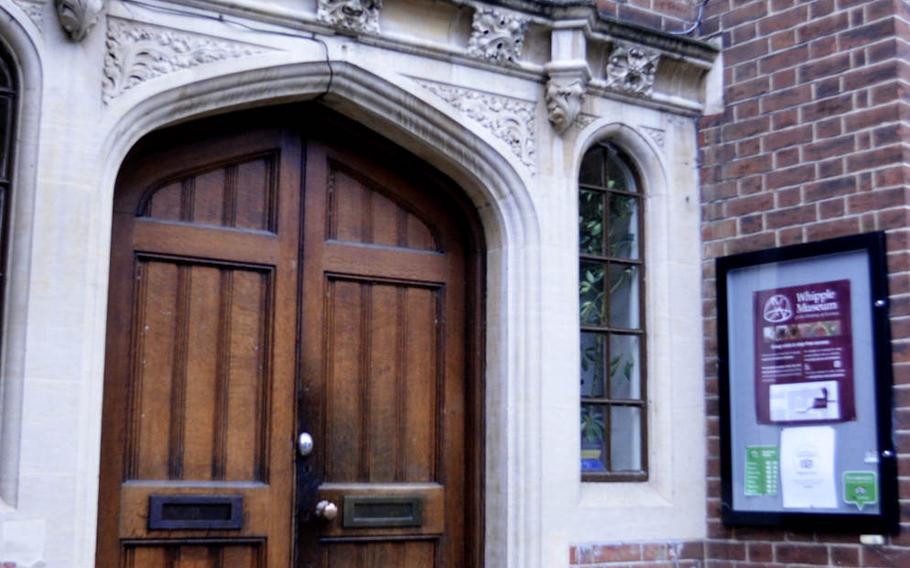
The front entrance to the Whipple Museum. It forms part of the Department of History and Philosophy of Science at the University of Cambridge. (William Howard/Stars and Stripes)
Cambridge, England, is a seat of learning even if you are not a student at the university.
Each day you can stumble onto a new museum while shopping or enjoying the sights and leave Cambridge feeling just a bit smarter than you did the day before.
The Whipple Museum of the History of Science is one of eight museums in the University of Cambridge Museums consortium. It houses scientific instruments, models, pictures, prints, photographs, books and other material related to the history of science.
The museum was founded in 1944 when Robert Stewart Whipple presented his collection of scientific instruments to the University of Cambridge.
While most of the collection dates from the 17th to the 19th centuries, there are a few items from medieval times to the present day.
On a recent visit, I found it amazing to see the advancement of scientific technology through the ages, and it made me appreciate the genius of humankind.
Many of the donated instruments were formerly used in the colleges and departments of the university, and as part of the current Department of History and Philosophy of Science, it includes a working library with a large collection of early scientific books.
While eavesdropping on a lecture in the newly refurbished Reserve Gallery, I saw how the museum still plays an important role in the department’s teaching and research. Students are allowed to study items in the collection such as microscopes, globes, surveying equipment and anything else related to their courses. I was tempted to join in just so I could pretend to be a 17th-century scientist for one afternoon.
On the second floor there’s a Victorian parlor with toys and games alongside the museum’s globe exhibition. I felt like I jumped from a moment in 1850 to walking alongside the planets in the solar system.
Spending an afternoon at the Whipple Museum is great for anyone with children who have an interest in science, and it offers a unique opportunity to see what kind of instruments were used by scientists such as Darwin.
I’m already planning my next visit to the museum this summer for a new temporary exhibition, “The Art and Science of Brewing,” to learn how brewing beer is both a fine art and a science.
The Whipple Museum of the History of Science
DIRECTIONS
Cambridge can be reached from RAF Mildenhall via the A14 in about 45 minutes with normal traffic. The Whipple Museum of the History of Science is at Free School Lane, Cambridge CB2 3RH. The entrance is located between Bene’t and Pembroke Streets very close to the other University of Cambridge museums. Use of the Cambridge Park and Ride facilities is encouraged as parking or just driving in Cambridge is horrendous.
TIMES
Regular hours are 12:30-4:30 p.m. weekdays. However, the museum closes for bank holidays and will be closed Dec. 16 and from Dec. 22 to Jan. 2. It will reopen Jan. 3.
COSTS
Admission is free. FOOD
There is no food or drink available at the Whipple Museum but there are many restaurant options in the vicinity.
INFORMATION